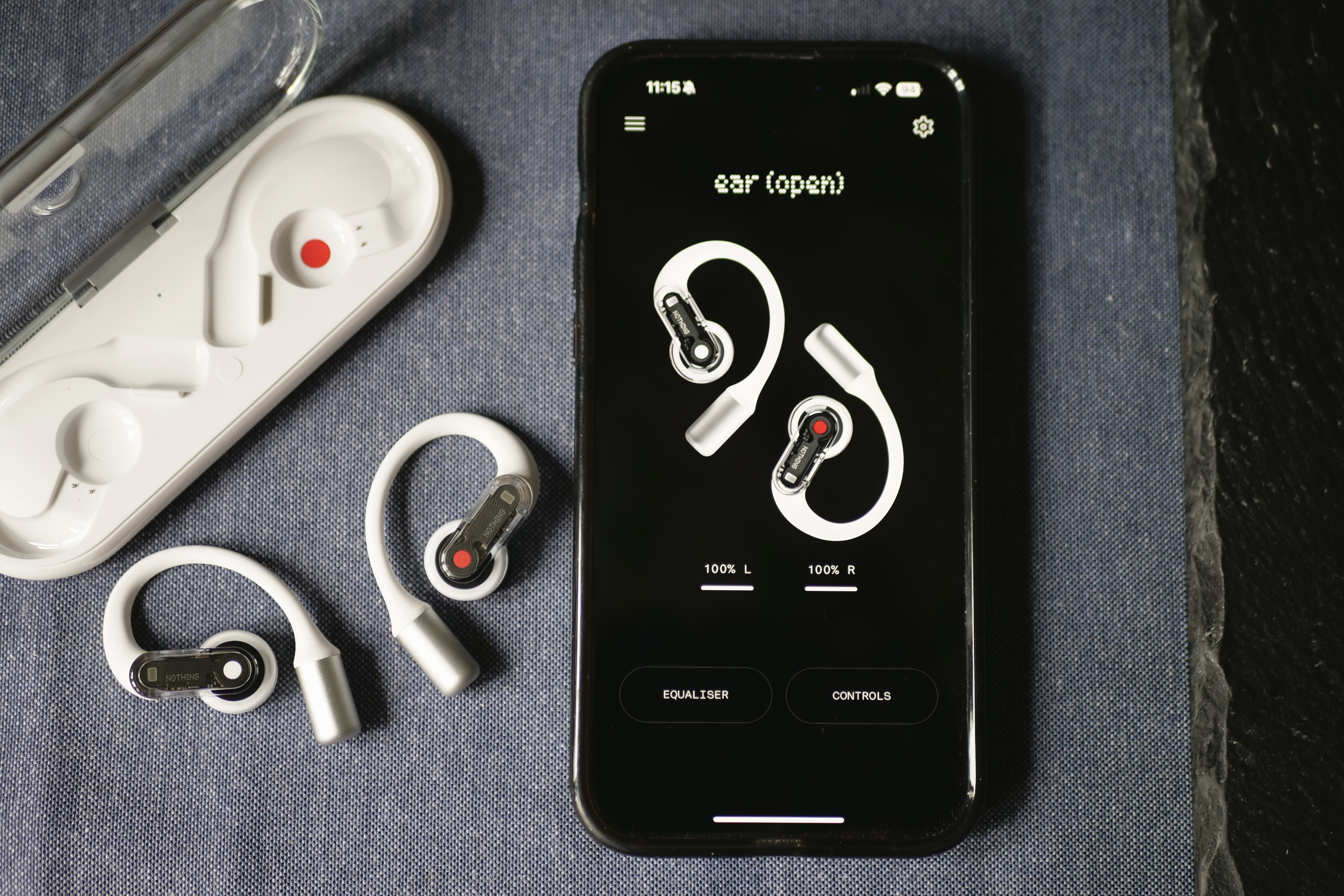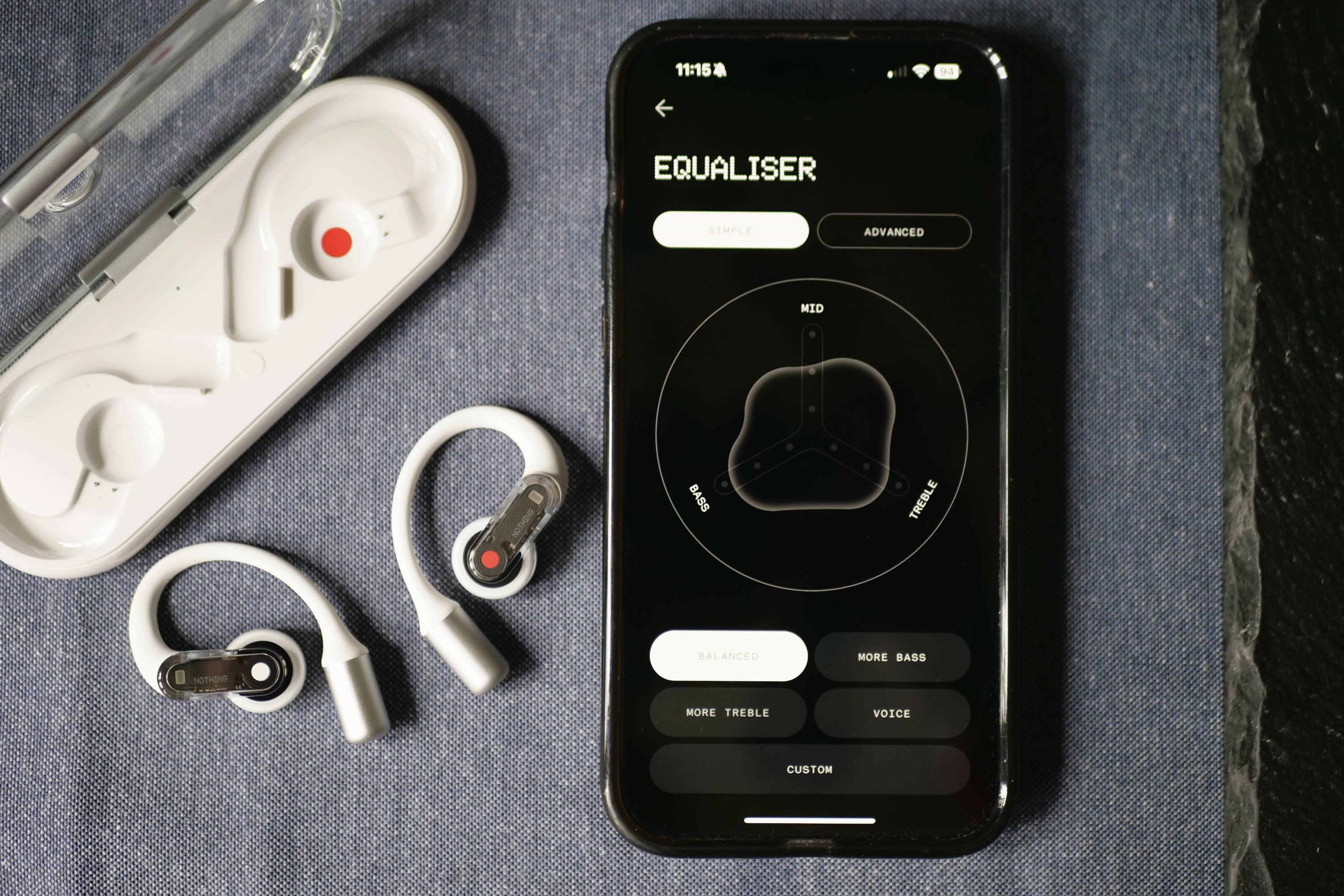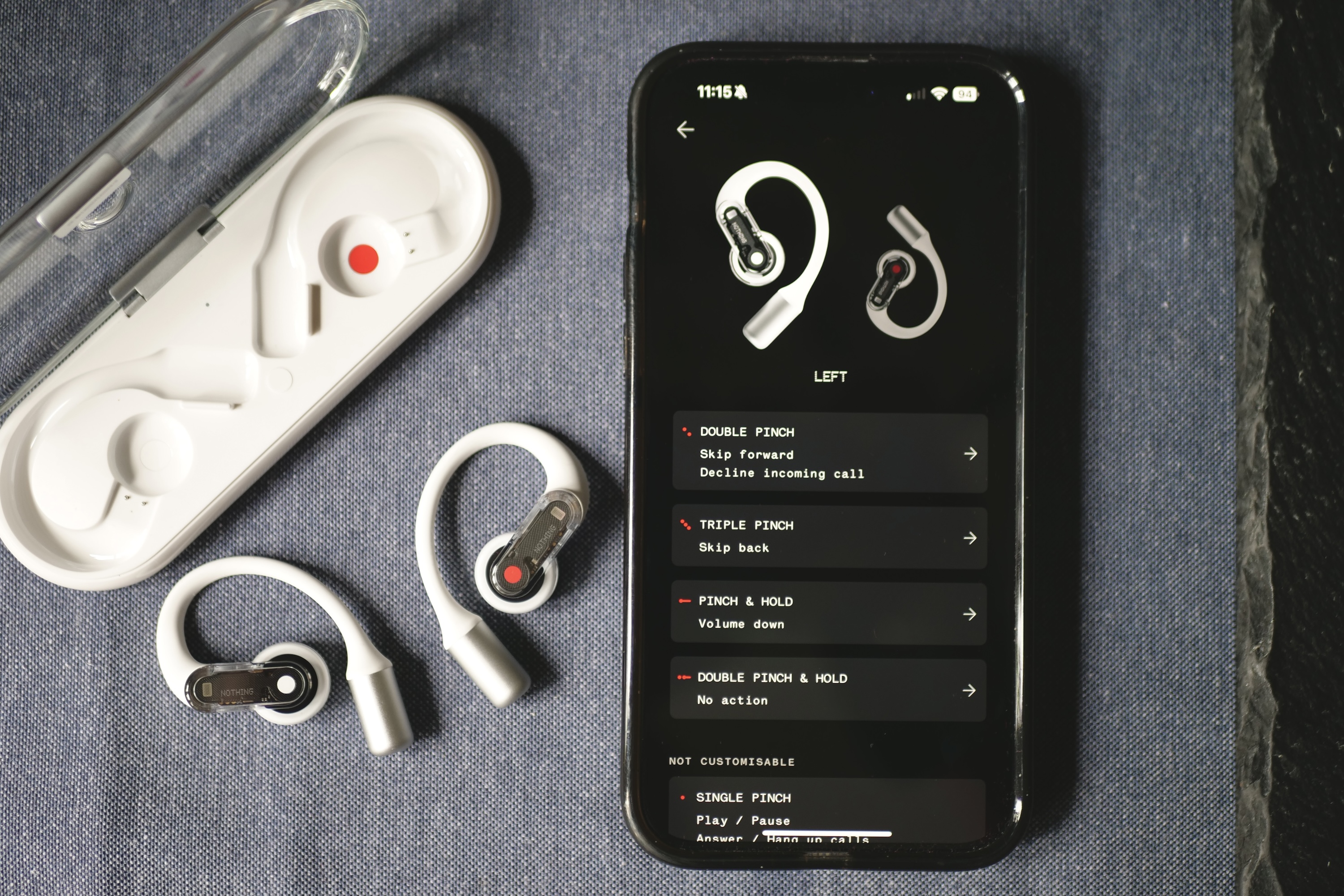Say you want to wear headphones, but still be aware of your surroundings. That means using a transparency mode on a regular set of earbuds, or a set like the Apple AirPods 4 that don’t seal in your ear — or a pair of open earbuds like the new Nothing Ear Open. More secure than AirPods and less artificial than using a transparency mode, they’re ready for comfortable, safe, everyday use.
Or are they? I’ve often turned to another, different type of product throughout my time with the Ear Open that I like just as much. They aren’t the same thing, but they do have an unexpected feature overlap.
Nothing’s cool design

The Nothing Ear Open reflect Nothing’s continued obsession with all things transparent and minimalist. Each unit weighs 8.1 grams and is made of plastic, silicone, and metal, complete with a transparent casing so you can see the components inside. Like other Nothing earbuds, the black-and-white color scheme gives them a modern, minimalist style. Inside the earbuds is a 14.2mm driver with a uniquely shaped titanium diaphragm.
The case is unusual as it’s long and quite flat, with a flip-up top to reveal the earbuds. Each is set in its own cradle and in the correct left and right orientation when you open it up, with the earbuds facing you. This makes putting them back inside the case when you’re finished quick and easy, as there’s no guessing about position or fit. On the back is an offset USB-C port to charge the case and the earbuds.

Each earbud has a solid body connected to a flexible silicone earhook, ending with a brushed metal weight. The silicone does attract lint, but it’s also easy on your skin and the overall lightness means they are not a bother to wear. Nothing says they “feel like nothing” when you wear them, and they certainly don’t hang off your ear. But they are noticeable, perhaps more so than an in-ear open earbud like the AirPods. If you’ve seen the Shokz OpenFit Air, that’s basically what we’re talking about.
Listening to the Ear Open

When you’re listening to music on the Ear Open, you can certainly hear everything going on around you. Luckily, those around you won’t hear much more than if you were listening to conventional open earbuds, unless you really crank up the volume. However, you won’t want to do this much as the Ear Open’s get harsh and bright, despite having an acceptable enough (for the type of headphone) bass response at low to mid volume levels.
There’s an equalizer in the app and a variety of different listening modes, and upping the bass improves the general sound. I’ve not listened to the Ear Open enough to pass complete judgement, but there’s nothing wrong with how music sounds, just don’t expect bass-heavy tracks to sound their best. Listening to spoken word avoids all the bass issues, and it’s when I’ve enjoyed the Ear Open the most.

I’ve happily worn the Ear Open for several hours and they haven’t become uncomfortable, but I do think they look a bit weird, especially from the front as they stick out at an angle for me. They are no more noticeable than any other similar earbud, but the Ear Open are far from being unique. The Shokz OpenFit, Shokz OpenFit Air, Soundcore C30i, and Bose Ultra Open all fulfill the same purpose, and that’s before the dozens of open earbuds with stems like the Apple AirPods. However, a different product stole the Ear Open’s thunder for me.
A different challenger

I’ve listened to podcasts a lot using the Nothing Ear Open when I’ve wanted to be aware of other things, and each time I’ve wondered why I don’t just use my Ray-Ban Meta smart glasses. They are a different take on the open-ear earbud trend and have several advantages over the Ear Open, with the control system being the biggest one for me. The Ear Open use touch-sensitive buttons in the case to control music playback, while the Ray-Ban Meta has a touch panel in the right-hand arm of the glasses.
The Ear Open’s controls need a substantial press to operate, and while I like the haptic and audible feedback, they’re nowhere near as fast and responsive as the Ray-Ban Meta’s controls. Raising and lowering the volume takes longer than it should — it requires a continued long press of the button on the Ear Open — but the Ray-Ban Meta’s swipe volume adjustment is instant. The Ear Open do sound better than the Ray-Ban Meta for music, but for spoken word, the performance difference is negligible for me.

I’m aware of my surroundings wearing the Ray-Ban Meta, just as I am with the Ear Open, and most people will never even know they are smart glasses. They are a considerably more incognito option, and as mine have prescription lenses they’re always on my face, and I don’t have the dual sensation of the earbuds and the arm of my glasses over my ear. Both the Ear Open and Ray-Ban Meta provide access to an AI assistant, and while the Ear Open uses ChatGPT, you do need a Nothing phone to use it. Meta’s AI has no such restriction. I’m a big fan of the Ray-Ban Meta’s camera too. There’s a price difference between them, which I’ll come to next, but I was surprised by the unexpected overlap of functionality even if they are very different types of product.
Weighing up the cost
The Nothing Ear Open cost $149 or 129 British pounds and will be available from October 1. They seem to have replaced the fairly similar $99 Ear Stick earbuds in Nothing’s headphone range, as they are sold out on its website. This makes them more expensive than the Shokz OpenFit Air, half the price of the Bose Ultra Open, and similar to the Apple AirPods. It’s also half the price of the Ray-Ban Meta smart glasses, but do remember the additional functionality you’re getting with the latter, and if you aren’t really going to listen to much music, they may be the better long-term investment.
Nothing states the Ear Open’s battery will last for eight hours on a single charge, and with the case, you’ll get 30 hours total use. A 10-minute charge provides two hours use if you’re in a hurry. Other features include Dual Connection, AI-enhanced voice clarity during calls, a low lag mode for gaming, an IP54 dust and water resistance rating for both the earbuds and the case, and support for AAC and SBC codecs.

Despite often longing for the Ray-Ban Meta smart glasses, I’ve enjoyed the Nothing Ear Open, particularly when listening to spoken word. I’d have preferred Nothing to have matched the Ear Stick price, which would have made them instantly easier to recommend compared to many of its rivals. However, the design, build quality, and great battery life claims makes them tempting, and they’re unquestionably light and comfortable enough to wear for hours at a time, so you always know what else is going on around you.







